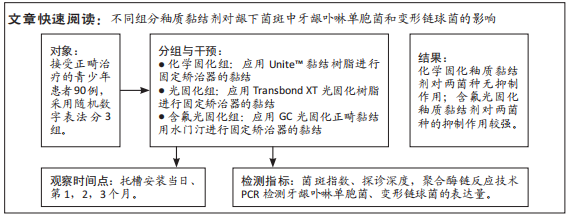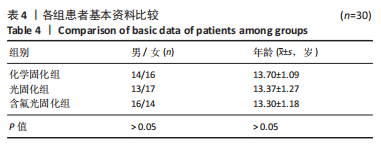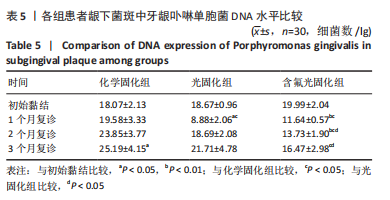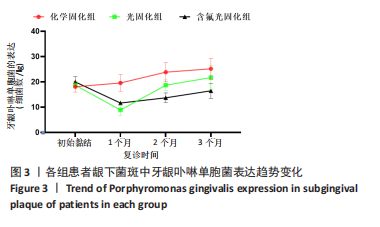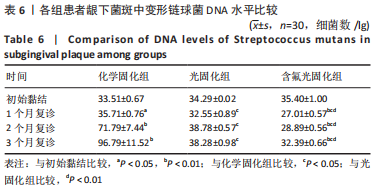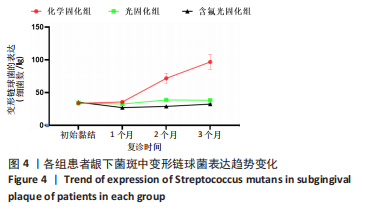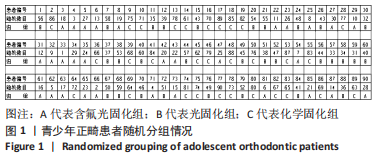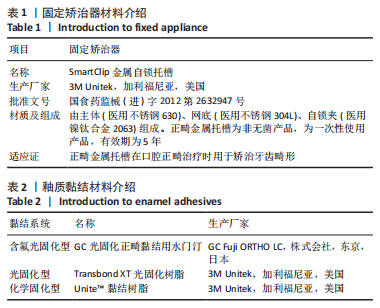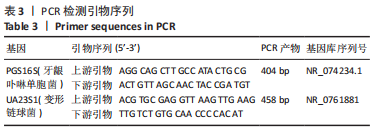[1] YU X, ZHANG H, SUN L, et al. Prevalence of malocclusion and occlusal traits in the early mixed dentition in Shanghai, China. PeerJ. 2019;7: e6630.
[2] LINJAWI AI. Sealants and White Spot Lesions in Orthodontics: A Review. J Contemp Dent Pract. 2020;21(7):808-814.
[3] KOZAK U, SEKOWSKA A, CHALAS R. The Effect of Regime Oral-Hygiene Intervention on the Incidence of New White Spot Lesions in Teenagers Treated with Fixed Orthodontic Appliances. Int J Environ Res Public Health. 2020;17(24):9460.
[4] ALMOSA N, ZAFAR H. Incidence of orthodontic brackets detachment during orthodontic treatment: A systematic review. Pak J Med Sci. 2018;34(3):744-750.
[5] 赵志河.口腔正畸学[M].北京:人民卫生出版社,2020.
[6] KIRSCHNECK C, CHRISTL JJ, REICHENEDER C, et al. Efficacy of fluoride varnish for preventing white spot lesions and gingivitis during orthodontic treatment with fixed appliances-a prospective randomized controlled trial. Clin Oral Investig. 2016;20(9):2371-2378.
[7] 叶秀恬.青少年正畸患者口腔健康与口腔保健状况调查分析[J].现代预防医学,2010,37(21):4041-4042.
[8] SARDANA D, ZHANG J, EKAMBARAM M, et al. Effectiveness of professional fluorides against enamel white spot lesions during fixed orthodontic treatment: A systematic review and meta-analysis. J Dent. 2019;82:1-10.
[9] WRIGHT JT, HANSON N, RISTIC H, et al. Fluoride toothpaste efficacy and safety in children younger than 6 years: a systematic review. J Am Dent Assoc. 2014;145(2):182-189.
[10] CHANG HS, WALSH LJ, FREER TJ. Enamel demineralization during orthodontic treatment. Aetiology and prevention. Aust Dent J. 1997; 42(5):322-327.
[11] CHAPMAN JA, ROBERTS WE, ECKERT GJ, et al. Risk factors for incidence and severity of white spot lesions during treatment with fixed orthodontic appliances. Am J Orthod Dentofacial Orthop. 2010; 138(2):188-194.
[12] ROGERS S, CHADWICK B, TREASURE E. Fluoride-containing orthodontic adhesives and decalcification in patients with fixed appliances: a systematic review. Am J Orthod Dentofacial Orthop. 2010;138(4): 390-391.
[13] MORTENSEN D, GIZANI S, SALAMARA O, et al. Monitoring regression of post-orthodontic lesions with impedance spectroscopy: a pilot study. Eur J Orthod. 2019;41(4):415-419.
[14] KNOSEL M, VOGEL AR, BLANCK-LUBARSCH M, et al. Comparison of potential long-term costs for preventive dentistry treatment of post-orthodontic labial versus lingual enamel cavitations and esthetically relevant white-spot lesions: a simulation study with different scenarios. Head Face Med. 2019;15(1):22.
[15] DZIUK Y, CHHATWANI S, MOHLHENRICH SC, et al. Fluoride release from two types of fluoride-containing orthodontic adhesives: Conventional versus resin-modified glass ionomer cements-An in vitro study. PLoS One. 2021;16(2):e247716.
[16] 吴海林,刘培玲.固定正畸治疗时戴固定矫治器对患者口腔黏膜、牙体、牙周等的损害研究[J].现代诊断与治疗,2014(14):3295-3296.
[17] 张永忠,胡渝芳.固定矫治器对正畸患者龋病活跃性的影响[J].辽宁医学杂志,2008,22(4):188-190.
[18] 魏洁,朱荷英.固定矫治器对牙周组织健康影响的临床研究[J].口腔医学,2011,31(3):191-192.
[19] AAS JA, PASTER BJ, STOKES LN, et al. Defining the normal bacterial flora of the oral cavity. J Clin Microbiol. 2005;43(11):5721-5732.
[20] 陈晓玲.固定矫治器对正畸患者牙周状况影响的研究进展[J].系统医学,2020,5(2):196-198.
[21] YANG N, ZHANG Q, LI J, et al. Progression of periodontal inflammation in adolescents is associated with increased number of Porphyromonas gingivalis, Prevotella intermedia, Tannerella forsythensis, and Fusobacterium nucleatum. Int J Paediatr Dent. 2014;24(3):226-233.
[22] BEIGHTON D. The complex oral microflora of high-risk individuals and groups and its role in the caries process. Community Dent Oral Epidemiol. 2005;33(4):248-255.
[23] SOCRANSKY SS, HAFFAJEE AD. The bacterial etiology of destructive periodontal disease: current concepts. J Periodontol. 1992;63(4 Suppl): 322-331.
[24] 郭润智.正畸治疗中牙周微生物菌群变化及炎症状态下牙周组织反应的探究[D].北京:北京大学医学部,2021.
[25] PRAXEDES-NETO OJ, BORGES BC, FLORENCIO-FILHO C, et al. In vivo remineralization of acid-etched enamel in non-brushing areas as influenced by fluoridated orthodontic adhesive and toothpaste. Microsc Res Tech. 2012;75(7):910-916.
[26] COHEN WJ, WILTSHIRE WA, DAWES C, et al. Long-term in vitro fluoride release and rerelease from orthodontic bonding materials containing fluoride. Am J Orthod Dentofacial Orthop. 2003;124(5):571-576.
[27] RIX D, FOLEY TF, MAMANDRAS A. Comparison of bond strength of three adhesives: composite resin, hybrid GIC, and glass-filled GIC. Am J Orthod Dentofacial Orthop. 2001;119(1):36-42.
[28] 韩骁,周健,唐旭炎.口腔正畸黏结剂的研究进展[J].蚌埠医学院学报,2009,34(2):180-182.
[29] SHIMAZU K, OGATA K, KARIBE H. Evaluation of the caries-preventive effect of three orthodontic band cements in terms of fluoride release, retentiveness, and microleakage. Dent Mater J. 2013;32(3):376-380.
[30] BAHSI E, SAGMAK S, DAYI B, et al. The evaluation of microleakage and fluoride release of different types of glass ionomer cements. Niger J Clin Pract. 2019;22(7):961-970.
[31] BASSO GR, DELLA BA, GOBBI DL, et al. Fluoride release from restorative materials. Braz Dent J. 2011;22(5):355-358.
[32] 陆珮珺,李晅.不同组分釉质黏结剂对牙龈卟啉单胞菌和变形链球菌的影响[J].山西医科大学学报,2018,49(4):371-374.
[33] Mazyad Mousa Alnasrallah.固定矫治器治疗对患者口腔内微生物菌群的影响:16sRNA核糖体二代高通量测序[D].大连:大连医科大学,2019.
[34] 陈婉红,苏江凌,蔡世雄.隐形矫治器、自锁托槽与传统托槽对成人正畸患者牙周指数及龈沟液炎性因子的影响[J].实用口腔医学杂志,2017,33(5):642-646.
[35] 饶南荃,徐舒豪,黄诗言,等.固定正畸青少年患者牙釉质脱矿的相关研究[J].临床口腔医学杂志,2018,34(1):25-29.
[36] FEU D, MIGUEL JA, CELESTE RK, et al. Effect of orthodontic treatment on oral health-related quality of life. Angle Orthod. 2013;83(5):892-898.
[37] 叶婷.氟化物在牙齿正畸釉质脱矿预防中的价值[J].湖北科技学院学报(医学版),2020,34(2):145-146.
[38] 李丽华,方平,米方林,等.口洁素防治正畸牙龈炎的临床效果评价[J].口腔材料器械杂志,2013,22(3):161-163.
[39] 左志刚,李洪发,徐津,等.三种正畸矫治器对牙周炎症及龈沟液炎性因子影响的长期研究[J].口腔医学研究,2018,34(11):1223-1227.
[40] 黄乔木.Ag_2O/TiO_2与牙科LED光固化灯联用对口腔致龋菌-变形链球菌的抗菌活性及机理探究[D]. 武汉:武汉工程大学,2019.
[41] WANG S, HUANG Q, LIU X, et al. Rapid Antibiofilm Effect of Ag/ZnO Nanocomposites Assisted by Dental LED Curing Light against Facultative Anaerobic Oral Pathogen Streptococcus mutans. ACS Biomater Sci Eng. 2019;5(4):2030-2040.
[42] 刘旭文,陈泽庆,黄诗捷,等.LED红光照射对牙龈成纤维细胞抗炎反应的影响[J].照明工程学报,2021,32(3):116-123.
[43] GOMEZ GF, HUANG R, MACPHERSON M, et al. Photo Inactivation of Streptococcus mutans Biofilm by Violet-Blue light. Curr Microbiol. 2016;73(3):426-433.
[44] 林泽文,周小丽,俞立英,等.基于LED光源的牙周炎光动力治疗的研究[J].照明工程学报,2014,25(1):98-102.
[45] 朱丽颖.氟离子注入钛表面改性对成骨细胞和牙龈卟啉单胞菌相互作用的影响[D].大连:大连医科大学,2012.
|
